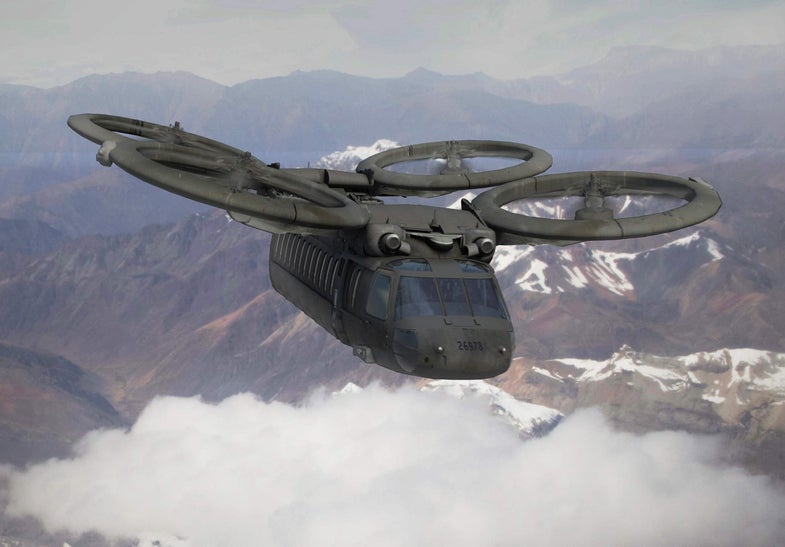Army Plans The War Helicopters Of Tomorrow
Joint Strike Rotor

Moving an army is no easy task, and it’s even harder when that army wants to travel by air. Working with NASA and the U.S. Navy, the U.S. Army is developing a new fleet of helicopters to carry troops into battle, and into the future. Some helicopter designs from the early 1960s are still in use. There’s been decades of innovation since then, and as we can see from the artist’s rendering above, the Joint Multi-Role Technology Demonstrator design could be radically new.
The latest issue of Army Technology Magazine examines just what the new copters could look like. In August, the Pentagon selected Sikorsky-Boeing and Bell Helicopter to make two prototypes. Sikorsky’s SB-1 Defiant design features a pusher propeller, like that in their X-2 and Raider helicopters. The pusher prop means the copter can fly faster than craft just relying on rotors.

Sikorsky-Boeng SB-1 Defiant Concept
Bell Helicopter’s V-280 Valor looks like a slimmed-down version of the tilt-rotor V-22 Osprey, with a speed goal of 320 mph and a proposed troop capacity will be about half that of the V-22. It is mocked up in three different versions: a utility variant to carry people or equipment, a medical evacuation model, and an attack helicopter complete with missiles.

V-280 Valor Concept
Carrying 12 troops and a crew of four, hovering at 6,000 feet in high temperatures, flying 2,400 miles, and traveling at 265 mph is a lot for any one vehicle to do. Ned Chase, a program director for the project, says “developing a joint aircraft instead of a separate version for each service is expected to save time and money in technology development,” but other joint projects with lots of requirements show it doesn’t always work out that way.
